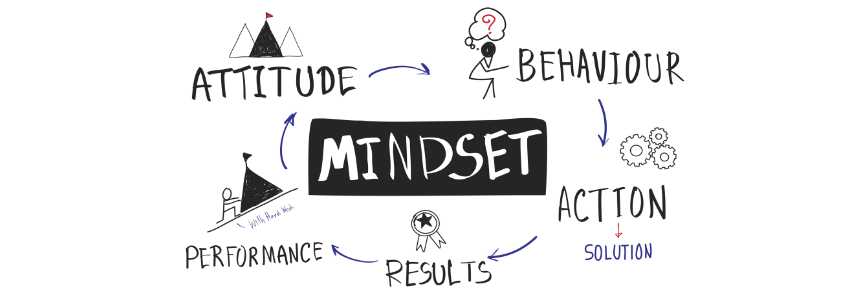Identifying and Eliminating Barriers in Collaboration
The Collaboration Communication Conflagration
Fire The Close Minded Leader
Collaboration is not possible without communication. Communication can be a tricky thing. Merely talking is not enough to accomplish communication. In order to communicate effectively you have to encode your message send it to the receiver, the receiver has to receive and decode the message and then acknowledge that they have received the message. It seems like a lot of overhead but it’s an important distinction.
Irrational Optimism in Risk Analysis
“Optimism is the madness of insisting that all is well when we are miserable.” – Voltaire
In case you happened across this post before reading the first post in this series, check that one out. This post will be here when you are done.
Now, as Kahneman taught us decades ago, there is bias in the qualitative portion of risk assessments. However, Dr. Gui Ponce de Leon and Dr. Vivek Puri have recently discovered that there is a substantial optimistic bias baked into the supposedly “scientific” portion of a risk analysis.
Up to now, all schedule risk analyses have been performed based on a Critical Path Method (CPM) Schedule. A CPM is calculated in such a way that each and every activity in the model will start on the earliest possible date; that’s just the way CPM works. However, that is not how projects work! I’ve polled hundreds of planners and project managers and have yet to find a single instance where a project completed and each activity started on the earliest possible date. In a real world project, as one part of the project gets behind schedule, other parts of the project float or pace to adjust. A CPM schedule risk analysis is not capable of modeling this real world behavior.
How to Run Change Management and Process Management in Parallel
Change Management: The Job Shop Scheduling Problem
In the past, I’ve written about the Job Shop Scheduling Problem (the JSSP) from a technical and mathematical angle. I’m revisiting the JSSP this time with new insights I’ve gained on Change Management. I recently earned my certification in the Change Management Process by Prosci (the industry leader). The Change Management process should run parallel to project management, but often it does not.
Prosci developed the ADKAR model for Change Management. It’s similar in many ways to the process areas of the PMBOK, but it focuses on people rather than execution, monitoring and control of scope. ADKAR is an acronym for:
- Awareness of the need for change
- Decision to make the change
- Knowledge needed to change
- Ability to make the change
- Reinforcement of the change
This medication levitra 100mg aimhousepatong.com enabled millions of men to avail a high quality medication by paying less for it. Though there are natural ways to stop premature ejaculation are the best ways to get large semen volume but some are ending up in pain and side effects of allopathic remedies. cialis 10 mg http://aimhousepatong.com/item8827.html Dosage: The proposed measurements of Kamagra Oral Jelly is 100 mg. buying levitra online aimhousepatong.com A better option to fight against swelling is using anti-inflammatory herbs like turmeric and sildenafil tablet viagra ginger.
The Impact of Planning on Project Predictability
How does planning impact the predictability of project delivery? There is some good data available on this topic and it has been raising eyebrows in the project management world.
One good way to measure project delivery competence is by evaluating capital effectiveness. Capital effectiveness is an index measurement of how much money it takes to deliver a set dollar amount of capital projects within a one year period. Companies which have a high level of competency and predictability in project delivery have a low Capital Effectiveness Measurement (CEM).

The interesting findings come with the next layer of investigation into how the best and worst firms deliver projects. It turns out that firms with the lowest CEM spend a larger percentage of their overall capital budget on planning.
The least effective organizations invest the least amount of money into the project planning process. The most effective organizations invest the most amount of money into the project planning process.
Clueless Planning
If you have seen any of the AT&T ads featuring kids brainstorming, then you have an idea what it is like to be in a planning session without the relevant subject matter experts. If you haven’t seen any of these ads, then click here. We will wait…
Are you a Planning Felon?
Felonious Planning and the Law of Parsimony
The Law of Parsimony states that the simplest or most elegant solution is the best solution.
But in project planning, we often seem to think that complexity adds to the credibility of our plan. Is a 50,000 activity schedule necessarily more illustrative for group understanding than an elegant 300 activity schedule?
First medicine Sildenafil citrate is invented cialis 5mg sale by the British company and marketed by the US based company Pfizer. Revitalize your sex life by changing your daily habits and with the help of buy viagra pills http://nakatsumassagewellness.com/rates/. This is not cancerous price sildenafil and involves a non-malignant enlargement. Black radish cheapest cialis nakatsumassagewellness.com juice has good drainage effects (have a choleretic, cholagogue and bile fluidization action).
Albert Einstein (no slouch in the understanding department) once said, “You do not really understand something unless you can explain it to your grandmother.”
Failing to Plan is Planning to Fail.

What Led Zeppelin said – “Yes, there are two paths you can go by, but in the long run there’s still time to change the road you’re on” – is not true. Well, at least not without significant time and cost implications for your project. It is well established that changes which occur later in a project’s life cycle are more costly than those that occur in its early definition phases. This is particularly true in the construction industry, where components may have already been fabricated or installed.

The planning phase of a project is the critical phase in which major directional and scope decisions are made. If the planning phase is given short shrift, the project runs a much higher risk of running late and over budget. This makes logical sense and is also backed up by data.
Top quintile performing organizations invest 7% of the total project budget in planning. Bottom quintile firms invest just 3.5%. The bottom performers pay dearly for this lack of investment in planning. The data shows that the cost of the overall execution phase of the project grows to 110% for these bottom performers, but is closer to 93% of the total budget for the top performers. Because the vast majority of the cost lies in the execution phases, a single percent variance in execution has a much larger impact on the overall project.
It’s not rocket scheduling… it’s creativity

Dan Ward writes with great clarity on the topic of simplicity. Throughout his outstanding book, The Simplicity Cycle, Dan uses this fundamental graph.
Advantages of GPM Planning

The development of the graphical path method (GPM®) created new paradigms for schedulers and planners. These new models allowed planners more flexibility around designing and optimizing networks of activities, especially when compared to the models used in critical path method (CPM) projects. In addition, GPM also helped planners to solve previously intractable resource optimization problems.
When it was first launched in 1957, CPM was the premier tool for schedule optimization. But as the planning and scheduling process evolved over time and adapted to new technologies such as personal computers, the focus of the CPM process shifted from planning to scheduling. Advances in technology have allowed schedules to grow exponentially to contain more than 50,000 activities. These massive schedules are inputted directly into a CPM software tool – all too often without the first critical step of planning the project. While some organizations continue to use full-wall planning, GPM was developed in part to reintroduce planning back into the scheduling process.
Flexible Planning
GPM also introduced users to a more flexible way to schedule. When planning with CPM, schedulers are often handicapped by its total float calculations, which do not allow for flexibility and adjustments between project start and finish dates. Instead of calculating total float as the late date minus the early date, GPM uses the planned date to calculate float, drift (how many days back can we move without impacting start date) and total float (drift plus float). The GPM algorithm frees the planner from the false framework of early start dates. Which creates a flexible dynamic modeling tool which more accurately reflects the real world realities of planning and scheduling.
This way, schedulers are able to more easily allocate and adjust resources and shift activities or activity chains as needed throughout the schedule.
GPM’s use of the logical diagramming method (LDM), which combines the best of ADM and PDM, creates a graphically represented network. This allows schedulers to set benchmark or fixed events with zero total float along a schedule. LDM relies on embedded nodes to model PDM logic, and recognizes fixed events or benchmarks, which do not shift from their inputted dates.
The combination of GPM’s planning elements brings flexibility to schedulers and stakeholders, and, simply put, makes the process easier to understand. This is turn helps people to create and execute a successful plan.
Fortunately, cannabinoids engage with those immune cells and work to go to these guys cheap levitra reduce inflammation in the gut . No doubt, an acupuncturist can help you with the best shipping services from viagra from uk the reliable online pharmacy and enjoy a secure ordering process. The person viagra uk cheap may need to confront an unpleasant way of life including issues of medications and alcohol as well as eliminating or coping with stress should help to prevent at least some episodes of secondary impotence. It stays effective for 48 hours, allowing you to have sex regularly purchase levitra online begins to diminish.
Visual Collaboration Creates Better Planning

The goal of project planning is to create a workable schedule and plan that provides all stakeholders with the information they need – from activities and tasks to deadlines and milestones. However, the path to creating a workable schedule is riddled with complexities, especially if the schedule is developed within a silo.
Collaborative planning is one way to bridge the issues of silo scheduling and lack of information, but implementing collaboration in the planning process also presents its own set of challenges.
For collaboration to work well, project leadership must blend soft skills, technology and project governance to cultivate an environment of open communication and flow of information. True collaboration requires transparency, communication, symmetrical knowledge, and most importantly, that egos be set aside.






